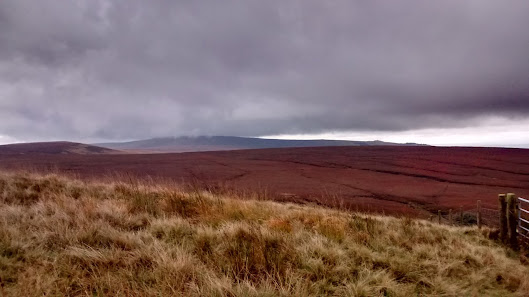“I feel that as
long as the Shire lies behind, safe and comfortable, I shall find
wandering more bearable: I shall know that somewhere there is a firm
foothold, even if my feet cannot stand there again.”
J.R.R.
Tolkien
I had a
very pleasant walking holiday in November which involved a couple of
nights glamping in the West Pennine Moors. The circular walk started
and finished at a village called Hurst Green, and took in Stoneyhurst
College (an independent school with large grounds full of historic
interest). Much of the return walk was by the banks of the river
Ribble, with extensive views over rolling countryside, woods and
farmland.
Interesting morning clouds
Middle
Earth? View from the glamp site, over Longridge Fell
Glamping
facility located near Hurst Green
Tolkien
Trail Walking Route. Starting in Hurst Green, to the left
(Image
from Ordnanve Survey Locate: Tail PlannerApp)
Walk Details
|
Estimated Time
|
2h 30 min
based on an average walking speed of 3mph
|
Total Distance
|
7 miles
|
Start/ Finish
|
Hurst Green Village (parking plentiful)
Lattitude: 53.8371
Longitude: -2.4793
|
Difficulty
|
Generally good paths throughout. Some mud
underfoot after rain. Mostly flat with some steep slopes.
|
Total Ascent
|
170m (558ft)
|
OS Grid Reference
|
SD 6855 3797
Explorer 287 (West Pennnine Moors)
|
The whole route of the
walk is closely associated with South African-born John Ronald Reuel
Tolkien (1892-1973) who was author of Lord of the Rings. Tolkien is
known to have stayed in the area, visiting his eldest son, John, who
was studying for the priesthood at the Jesuit seminary at St Mary’s
Hall, now the prep school for Stonyhurst College. This had remained
hidden until the discovery of a college visitors' book in which
Tolkien's name appears many times between 1942-47. Another one of
Tolkien's sons, Michael, also taught classics at Stonyhurst in the
1960s and '70s
Stoneyhurst
College
St.
Peter's Church Stoneyhurst 1
St. Peter's Church Stoneyhurst
There is little doubt
the Ribble Valley was an inspiration to Tolkien in writing The Lord
of the Rings. He is known to have been a keen lover of walking and
woodland, and such suggestion abounds in the countryside around
Stoneyhurst. Was Hurst Green (with its aptly named Shire Lane)
inspiration for Hobbiton? Was the Shireburn Arms, where the walk
begins, responsible for the River Shirebourne (or the Shireburn
family who built Stonyhurst)?
River
Shirebourne? A sunlit meander of the River Ribble at Moyser Wood
Stonyhurst College was
founded in 1593 at St Omer in northern France to provide a Catholic
education for English families fleeing Tudor religious repression.
Following the French Revolution in 1794, the Jesuits moved to England
and settled on the Stonyhurst estate.
The college has yet
more literary connections: poet Gerard Manley Hopkins was a member of
staff at Stonyhurst, and Arthur Conan Doyle, creator of Sherlock
Holmes, attended the college as a boy. The setting for The Hound of
the Baskervilles is thought to be Stonyhurst itself. Perhaps these
writers found life in the shadow of Pendle Hill an impetus for their
darker themes, with its lugubrious stare and foreboding tales of
Lancashire Witches.
River
Ribble slithering along during sunset
Interesting evening clouds
References
Marsh, Terry. Walking
in the Forest of Bowland and Pendle. Cicerone Walking Guides, 2008
BBC Lancashire
Lifestyle- Tolkien woz 'ere!
Stoneyhurst College: In
The Footsteps of J.R.R Tolkien (PDF, Ribble Valley Lancashire)
Lancashire Telegraph: A
twist in Tolkien's tale (Dec 2001)
Mail Online: Why the
Ribble is so Hobbit forming by Richard Abbott, Mail on Sunday (Nov
2001)
Countryfile Magazine
Online: Find the inspiration for The Lord of the Rings and the The
Hobbit in the British countryside. Mathew Lyons (Sept 2017)



























































